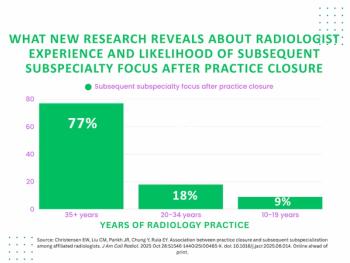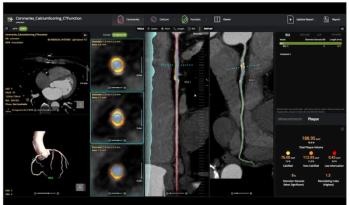
Vendors turn to integrators for PACS installation expertise
Despite bluster and hyperbole to the contrary, PACS companies are detaching themselves from the very capability they promote. These vendors, more and more, are becoming product- rather than solution-based.“Leading PACS suppliers are starting to
Despite bluster and hyperbole to the contrary, PACS companies are detaching themselves from the very capability they promote. These vendors, more and more, are becoming product- rather than solution-based.
“Leading PACS suppliers are starting to outsource the installation of their equipment,” said Douglas Orr, president of J&M Group, a PACS consulting firm in Connecticut. “They lay the most important task onto other organizations, even though the assembly and installation of components is critical.”
Siemens is one of these vendors. The company is now outsourcing installations of large-scale PACS. It has not, however, lost sight of the importance of the step.
“We have certain certified partners, whom we choose carefully, who install networking infrastructure and PC hardware,” said Rik Primo, Siemens’ director of new business development. “Siemens, however, provides the software installation and system integration.”
Primo said the advantage of this arrangement is high-quality work performed by skilled network and PC technicians. The benefit to customers is faster installations. Siemens assumes overall responsibility, which tends to reduce fingerpointing.
There is definitely an upside to the practice, according to Gary Reed, a consultant with Integration Resources of New Jersey. It promotes a wider range of PACS suppliers, which in turn creates a competitive environment that results in better service and prices. Consequently, hospitals have greater opportunity to select a vendor with multiple clinical information systems and a single source for IS services, he said.
“Many third-party PACS suppliers are offering PACS on a usage basis with the option to switch suppliers, which will keep PACS suppliers honest and on their toes,” Reed said.
The trend may be more a response to the shortage of qualified people to support PACS market demands than a propensity for corporate delegation. There is undeniably an economic component, however. A PACS vendor that supplies only software will attain greater profit margins when freed from the burden of the massive infrastructure required to deliver PACS services, Reed said.
Industry experts believe a vendor relationship with a third party can jump-start a PACS project, but pitfalls may lurk.
“Too often, vendors forget that PACS affects much more than just the radiology department,” said Denise Chaney of SAIC Health Care Consulting. “The coordination required to successfully implement a system to meet broader institutional needs requires a deeper understanding and multidepartmental working relationship.”
The practice brings up other issues. Local support from the third party might not be up to the standards of the software supplier, affecting the performance of the PACS and reflecting negatively on the product, Reed said. The vendor may regret the resulting arm’s-length relationship with end users, which might affect future product introductions, service contracts, and revenues.
Newsletter
Stay at the forefront of radiology with the Diagnostic Imaging newsletter, delivering the latest news, clinical insights, and imaging advancements for today’s radiologists.






























